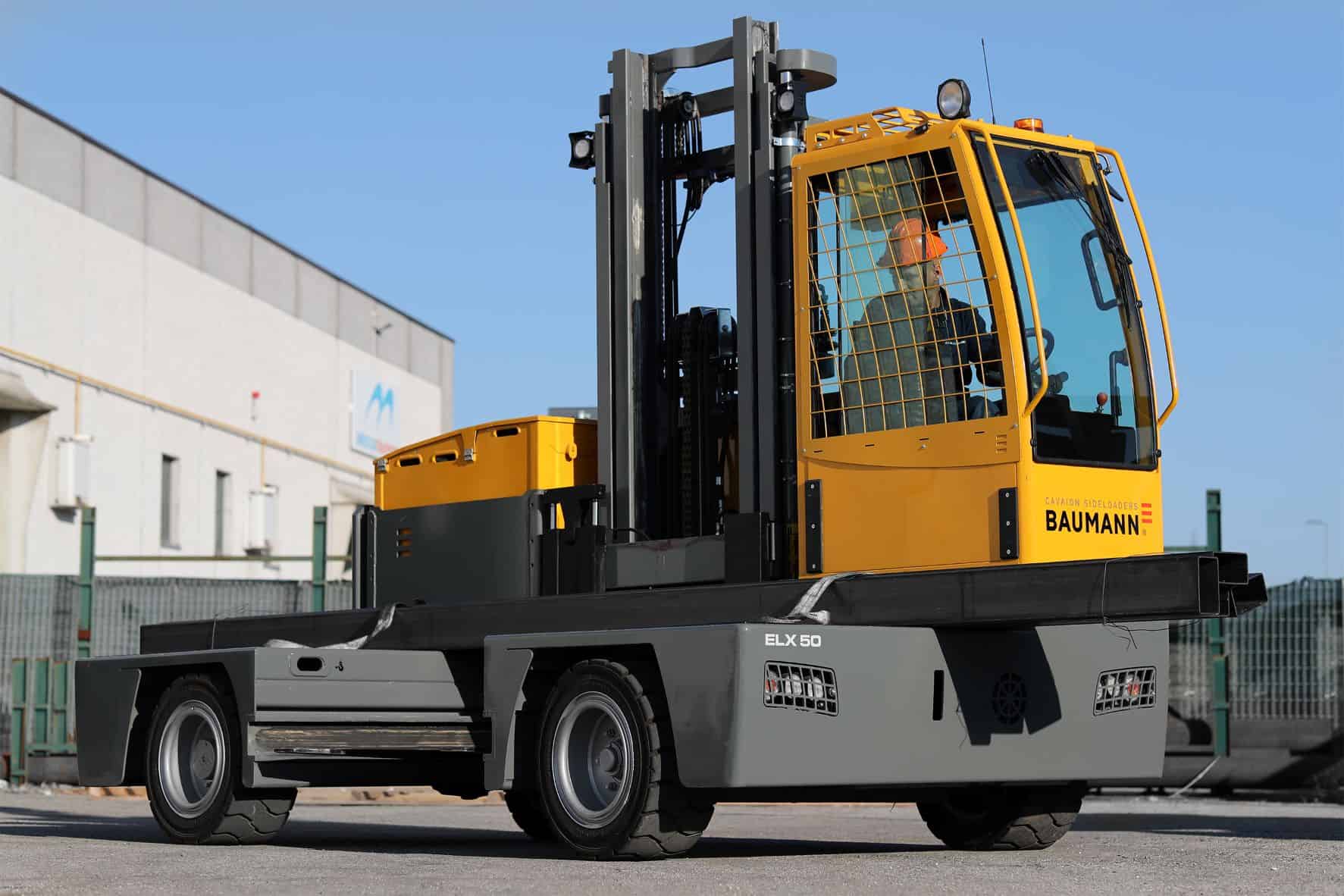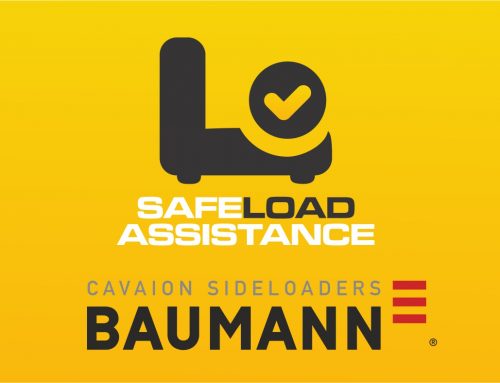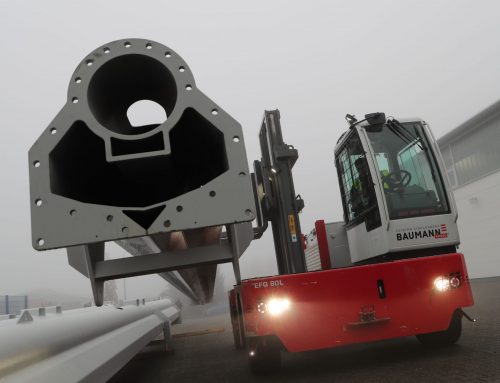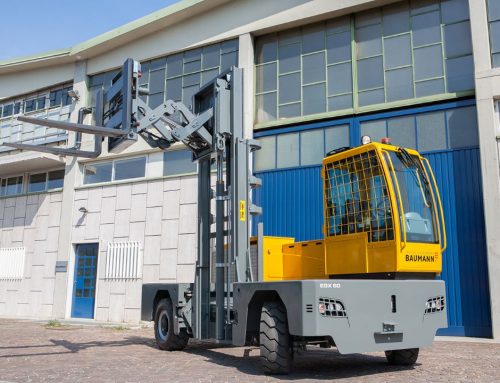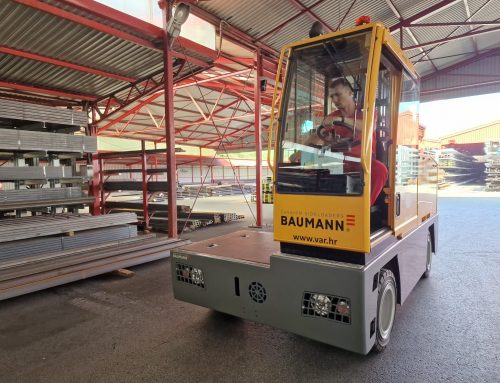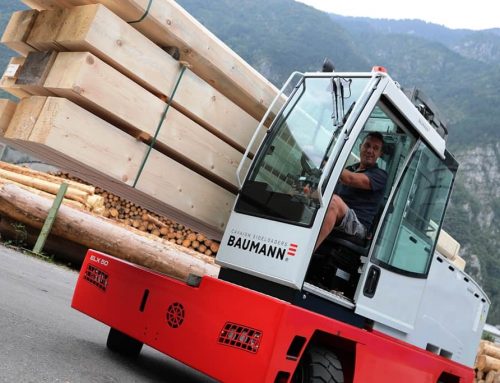A multi-directional forklift has axles that rotate to facilitate movement in four directions.
The argument goes that moving both forwards and backwards, and side to side, makes a multi-directional machine more manoeuvrable, giving all the benefits of counterbalanced forklifts, sideloaders and narrow aisle lift trucks in one vehicle.
Whether you agree with the statement will probably depend on if you are coming at the question from the perspective of handling and storing pallets as a forklift or reach truck user; a long load operation, handling timber or steel perhaps, or if your operation does both.
Multi-Directional, Sideloaders Or Counterbalance Forklifts?
Counterbalance forklifts are often bulkier than multidirectional forklifts because of the way the counterweight is designed. This additional length makes turning in small spaces problematic.
Multi-directional machines, meanwhile, have legs rather than decks on which to place the load. These provide less surface area and stability for the load to rest on and the small wheels require smooth even surfaces.
Sideloaders can, and do, work indoors and out, in narrow aisles, sometimes with rail guidance. Larger sideloaders tend to work outside where loads are larger, heavier and are carried over uneven ground and longer distances.
Multi-Directional Forklifts & Sideloader Similarities
There are some similarities between sideloaders and multi-directional forklifts, of course. One question often asked by customers, operators and Baumann dealers alike is, why don’t you make a multi-directional sideloader?
Well, keep this to yourself, but at one time we did. In fact, we’ve done this more than once.
The first attempt, in the 1970s, was based on our sideloader design of the time and featured at the Hannover Fair. Details are a little sketchy, but the truck never really took off, perhaps because demand for such machines was limited at the time.
The second version, the Baumann Foxx, was built much later as a multi-directional forklift that, like all multi-directional trucks, moved in a different way to a conventional machine.
To be fair, the Foxx had its fair share of admirers but was not really a sideloader and the original Baumann sideloader was a bit of a beast.
Baumann sideloaders have always been made with long loads in mind and the experience building multi-directional machines led us to conclude that these machines were more suited to different types of applications.
A multidirectional forklift may turn great, but what about the load? Forwards motion with a long load held across the forks is inherently unstable and encourages lifting to avoid obstacles whilst turning. Moving with the load raised is a major cause of tip overs.
A sideloader driving forwards with a load carried lengthways (on the deck and along the machine’s length) allows long goods, typically timber, steel, concrete or plastics, to move through doorways and be stored more easily than via conventional forklift trucks.
The Right Machine For The Right Application
Every application is, of course, different and arguments are made on all sides as to the viability and suitability of different types of forklifts.
Including sideways movement, whilst undoubtedly adding something, also takes something away. The process is slowed down whilst wheels rotate and the tyres and ground can be damaged as the wheels dig in.
Visibility is often not as good and the operator’s area is restricted to keep the machine compact. The main benefit, sideways movement, may turn out to be less important.
The turning circle on a Baumann sideloader is remarkably good and users are often surprised at the tight spaces in which they can operate.
Even so, a quick look at the automobile industry shows that whilst the fascinating odd design adding sideways movement in cars may have been attempted, they still tend to drive forwards and backwards.
Similarly, forklifts with mecanum wheels have been tried previously and yet never really taken off.
Finally, you might consider the fact that the leading multi-directional forklift manufacturers still manufacture conventional sideloaders and conclude that they have limited benefits for long load users.
Why Choose A Baumann Sideloader?
One message that has emerged from customers over the past few decades has been the quality, strength and reliability of the Baumann sideloaders.
The company’s long-term approach puts real emphasis on the quality of manufacture and product reliability. With high quality support, they have a new machine that improves their operation, reduces waste, provides greater comfort and productivity, as well as getting immediate fuel and maintenance savings.
Get in touch with us here to talk about getting a used or new sideloader for your business.

